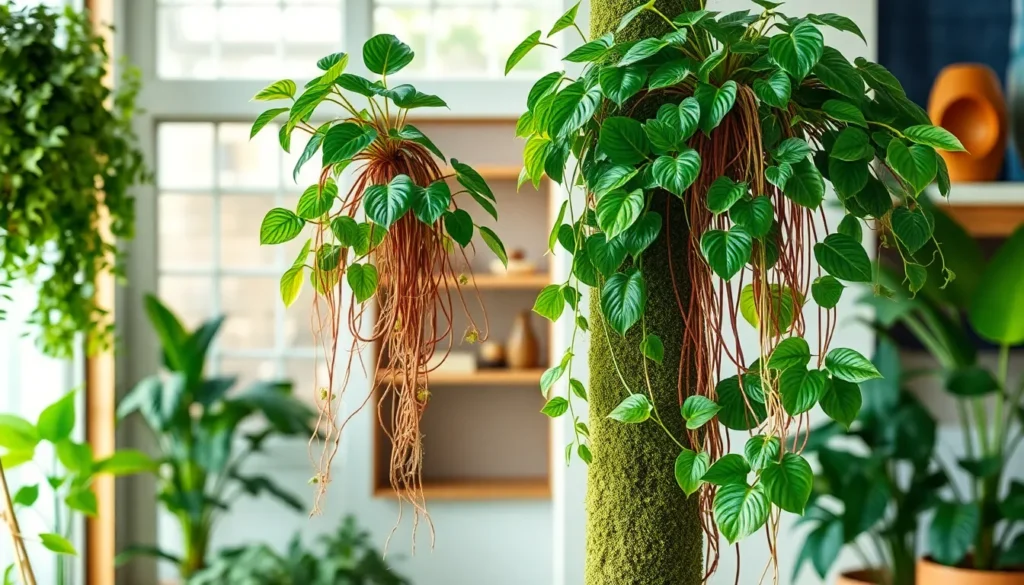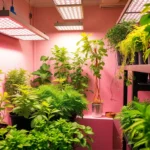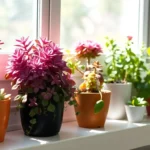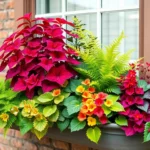We’ve all watched our climbing plants struggle to find proper support as they reach toward the light. Those trailing pothos and monstera leaves that should be standing tall instead droop sadly from their pots. That’s where moss poles come in – they’re the game-changing support system your indoor jungle has been missing.
Moss poles aren’t just decorative accessories; they’re functional plant supports that mimic the natural environment your climbing plants crave. These moisture-retaining structures provide the perfect anchor for aerial roots while encouraging healthier growth patterns and larger leaf development.
Whether you’re dealing with a leggy philodendron or want to help your monstera achieve those coveted fenestrations we’re all after moss poles offer the ideal solution. We’ll walk you through everything you need to know about choosing using and maintaining these essential plant care tools that’ll transform your houseplant game forever.
What Are Moss Poles and Why Your Plants Need Them
Moss poles serve as vertical support structures that replicate the natural growing conditions climbing plants experience in their native habitats. These essential plant accessories transform how we care for our indoor tropical plants while addressing their fundamental need for upward growth support.
Natural Climbing Support for Houseplants
Mimicking forest environments creates the ideal conditions for climbing plants like pothos, monstera, and philodendrons to thrive indoors. We see dramatic improvements when these plants can anchor their aerial roots to textured surfaces rather than struggling to find support on smooth walls or furniture.
Encouraging vertical growth allows plants to develop their characteristic mature leaf shapes and sizes. Climbing plants naturally produce larger, more fenestrated leaves as they ascend toward light sources, and moss poles help this essential growth pattern.
Preventing drooping and breakage becomes effortless when plants have sturdy vertical support. We notice that unsupported climbing plants often develop weak, trailing stems that break under their own weight, while moss pole supported plants maintain strong, upright growth.
Moisture Retention Benefits
Sphagnum moss construction provides continuous moisture availability for aerial roots throughout the day. We find that the moss material holds water for extended periods, creating a humid microenvironment that supports healthy root development and nutrient absorption.
Reducing watering frequency becomes possible as moss poles slowly release stored moisture to plant roots. This natural irrigation system means we water less often while maintaining optimal hydration levels for our climbing plants.
Creating humidity zones around the plant structure helps combat dry indoor air conditions. We observe that the evaporation from moist moss poles increases local humidity levels, benefiting not only the supported plant but surrounding houseplants as well.
Enhanced Growth and Health
Promoting aerial root attachment leads to stronger, more resilient plant structures. We see climbing plants develop extensive root networks that grip moss poles securely, providing stability and improved nutrient uptake pathways.
Accelerating leaf development occurs when plants receive proper climbing support and moisture retention. We notice that moss pole supported plants produce new leaves more frequently and achieve their full genetic potential for size and variegation patterns.
Strengthening stem structure happens naturally as plants grow upward against supportive surfaces. We find that climbing plants with moss pole support develop thicker, more robust stems compared to their trailing counterparts, resulting in healthier overall plant architecture.
Best Plants That Thrive With Moss Poles
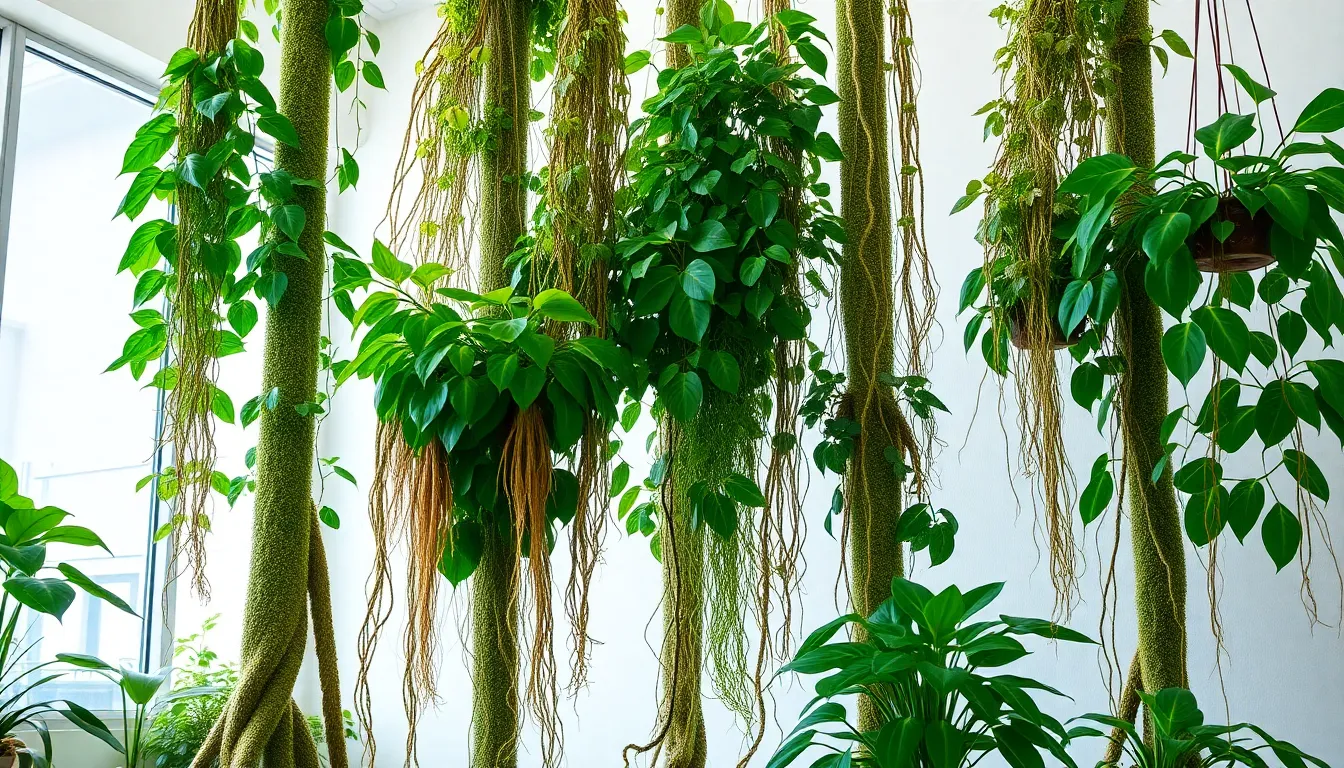
Certain climbing plants naturally excel when paired with moss poles, developing stronger growth patterns and healthier foliage. We’ll explore the top plant varieties that benefit most from vertical support structures.
Pothos and Philodendron Varieties
Pothos plants transform dramatically when trained on moss poles instead of trailing freely. These popular houseplants, particularly Epipremnum aureum, develop significantly larger leaves and stronger aerial root systems when climbing vertically. Standard coir or moss poles work perfectly for pothos varieties if we secure them properly in the pot.
Philodendrons show remarkable improvement with moss pole support, especially larger species. We’ve observed that philodendrons produce bigger leaves and more extensive aerial root networks when climbing rather than trailing. Various philodendron types benefit from this vertical growing method, creating healthier and more visually striking plants.
Monstera Species
Monstera plants rank among the top candidates for moss pole support due to their natural climbing habits. These impressive plants, including Monstera Deliciosa and Monstera Dubia, require sturdy support structures to accommodate their thick stems and massive aerial roots. We recommend using larger diameter moss poles for these substantial plants.
Training monsteras on moss poles replicates their natural tree climbing behavior in tropical environments. This vertical support leads to healthier, larger foliage development that mimics their wild growth patterns. Majestic varieties like Monstera Peru and Rojo need XXL or thick moss poles to withstand their considerable size and aggressive aerial root growth.
Other Climbing Aroids
Syngonium plants, commonly known as Arrowhead Plants, adapt beautifully to moss pole structures. These climbing aroids naturally use aerial roots for support in their native habitats, making moss poles ideal indoor growing answers. We find that syngoniums develop more mature leaf shapes when provided with vertical support.
Hoya varieties also thrive with moss pole support, utilizing their natural epiphytic growing tendencies. These plants benefit from the textured surface that moss poles provide for aerial root attachment. Orchids and certain ivy species similarly adapt well to moss pole environments, successfully replicating their natural epiphytic conditions indoors.
Types of Moss Poles Available for Indoor Gardens
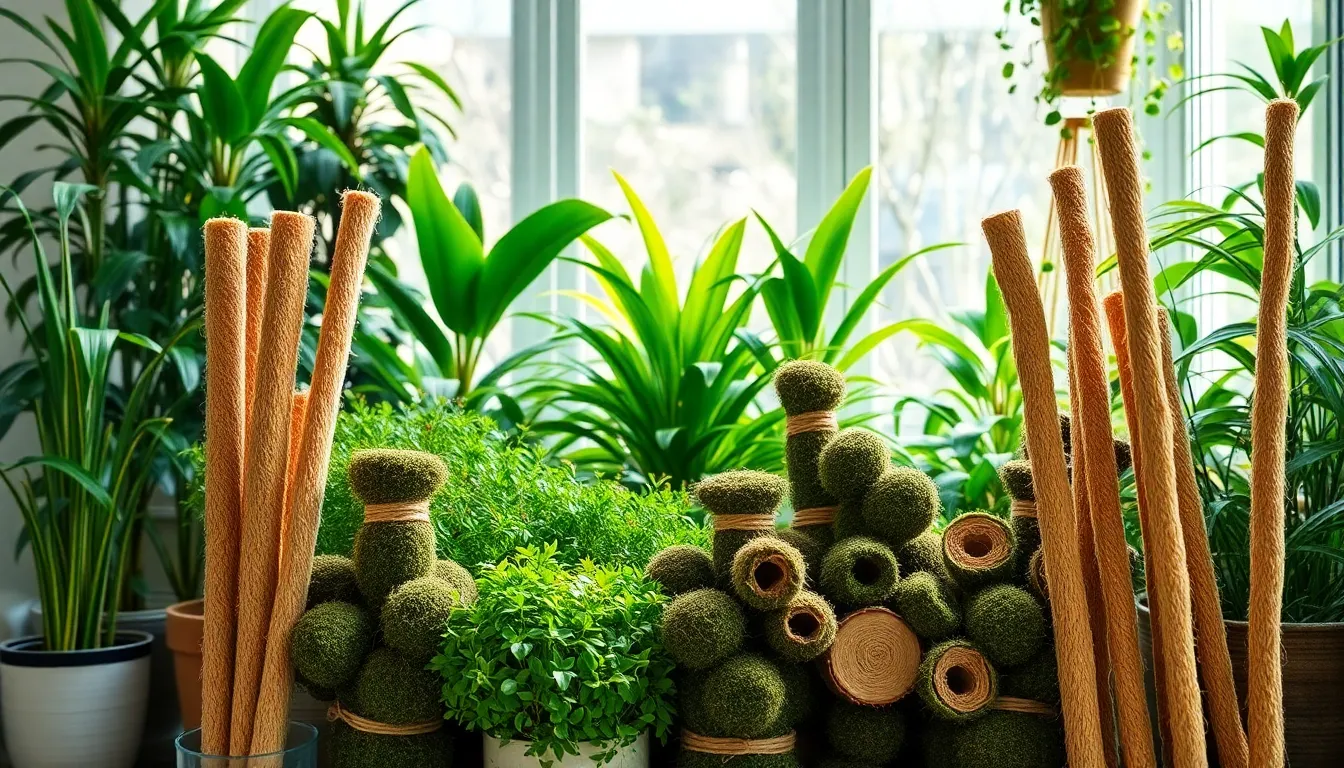
Indoor gardeners have several effective moss pole options to support their climbing plants. Understanding the different types helps us choose the best support system for our exact plants and growing conditions.
Traditional Sphagnum Moss Poles
Sphagnum moss poles represent the most popular choice among indoor plant enthusiasts. These supportive structures feature high-quality sphagnum moss wrapped securely around a sturdy central stick or pole. Moisture retention capabilities make sphagnum moss exceptional at holding water while gradually releasing it to plant roots.
Nutrient-rich properties of sphagnum moss provide additional benefits beyond simple support. Plants like Monstera, Philodendrons, and Pothos develop stronger aerial roots when they can attach to these textured surfaces. Larger foliage emerges as climbing plants receive consistent moisture and nutrients from the moss material.
Aerial root development accelerates dramatically when plants have access to the organic matter within sphagnum moss. We’ve observed that plants trained on these traditional poles show improved leaf size and overall health compared to unsupported specimens.
Coconut Coir Alternatives
Coconut coir poles offer an eco-friendly alternative to traditional sphagnum moss options. Compressed coconut fibers create these durable support structures that retain moisture moderately while providing excellent anchoring points for aerial roots.
Lightweight construction makes coco coir poles easier to handle and position in our indoor gardens. Decay resistance gives these poles longer lifespans compared to sphagnum moss alternatives, making them increasingly popular among indoor gardeners.
Environmental sustainability appeals to gardeners seeking natural materials for their plant support systems. Coconut coir poles deliver reliable performance while reducing our ecological footprint through the use of renewable coconut fiber waste.
DIY vs Store-Bought Options
DIY moss poles provide complete customization control over height, diameter, and materials used. Creating homemade poles using PVC pipe or sturdy sticks allows us to match exact plant requirements while saving money on commercial alternatives.
Economical benefits make DIY construction attractive for gardeners supporting multiple climbing plants. We can wrap sphagnum moss or coconut coir around our chosen base materials and secure everything with twine or wire for professional results.
Store-bought moss poles offer convenience and uniform construction quality. Pre-made options often include stability features like bendable frames or weighted bases that enhance support capabilities.
Time savings make commercial poles appealing for busy gardeners who prefer ready-to-use answers. Store-bought poles typically cost more than DIY versions but eliminate the construction time and material sourcing requirements.
How to Choose the Right Size Moss Pole
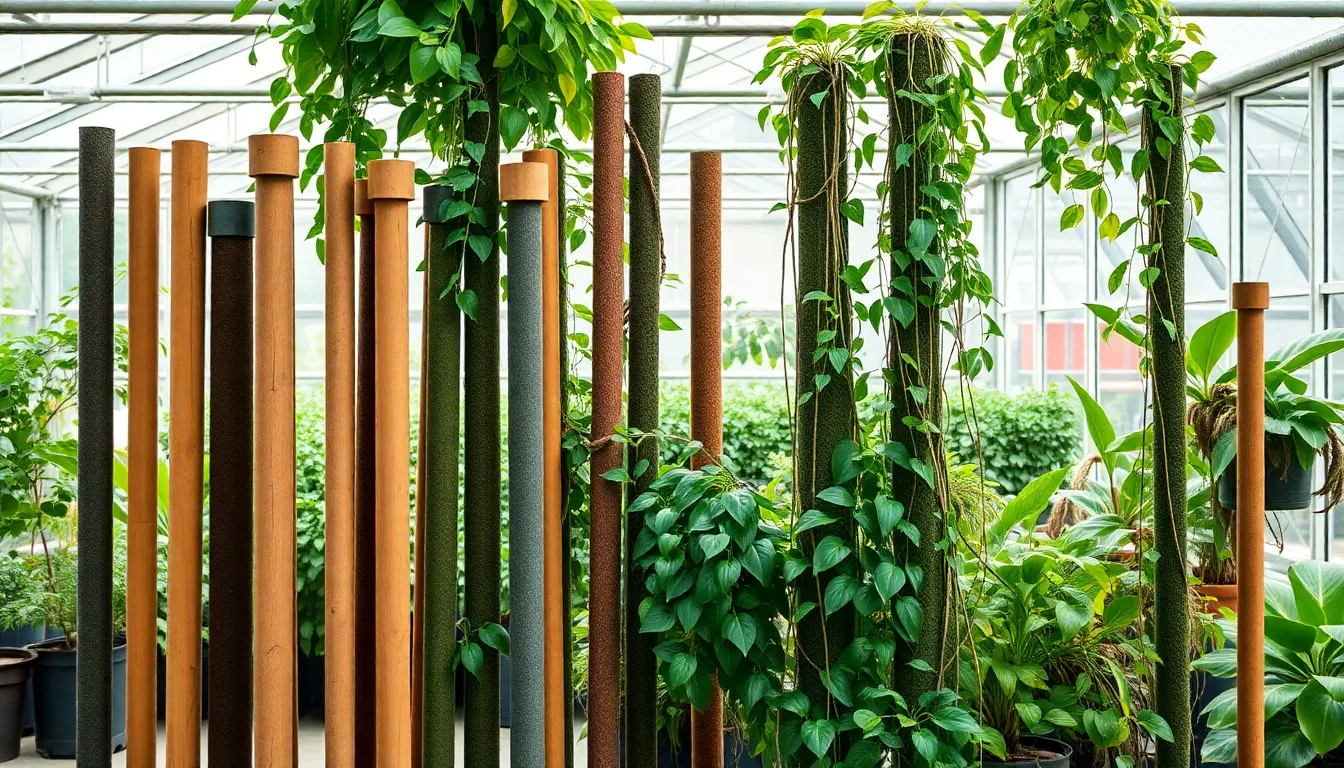
Selecting the proper moss pole dimensions determines whether your climbing plants will thrive or struggle with inadequate support. We’ll guide you through the essential sizing factors that ensure optimal plant growth and development.
Height Considerations for Different Plants
Choose a moss pole height that matches or slightly exceeds your plant’s current height to provide adequate vertical support for immediate needs. Young pothos and small philodendrons typically require 2-3 foot poles, while mature specimens need 4-6 foot structures to accommodate their extensive growth patterns.
Plan for rapid vertical development by selecting poles that account for your plant’s growth rate. Fast-growing species like Epipremnum aureum can climb 12-18 inches annually, making taller poles essential for continuous support without frequent replacements.
Consider your plant’s mature size potential when making height selections. Monstera deliciosa specimens can reach 8-10 feet indoors with proper support, requiring substantial pole heights to maintain their natural climbing behavior and prevent overcrowding.
Diameter Requirements
Select pole diameters between 1.5 to 3 inches for most climbing houseplants to ensure adequate root penetration and secure attachment. Thinner poles work well for delicate vines like pothos, while thicker options support heavy climbers such as mature monsteras.
Match diameter thickness to your plant’s aerial root system for optimal anchoring capabilities. Plants with aggressive aerial roots, including philodendrons and climbing aroids, benefit from denser moss pole construction that allows deep root penetration without restricting access.
Ensure the fibrous material density supports your plant’s weight as it develops fuller foliage and extensive root networks. Bigger plants require sturdier, thicker poles that can endure increased weight loads while maintaining structural integrity throughout the growing season.
Future Growth Planning
Start with slightly larger poles than currently needed to accommodate your plant’s inevitable upward expansion without disrupting established root systems. Changing moss poles after roots have anchored deeply can stress plants and interrupt their natural growth patterns.
Allow room for aerial root extension along the pole’s full length by choosing structures that provide 12-18 inches of additional climbing space beyond your plant’s current reach. This prevents overcrowding and ensures continuous vertical development opportunities.
Plan for long-term growth cycles by selecting moss poles that can support your plant’s mature dimensions and weight distribution. Most climbing houseplants continue developing for 3-5 years, making initial size planning crucial for sustained health and optimal foliage development.
Step-by-Step Installation Guide for Moss Poles
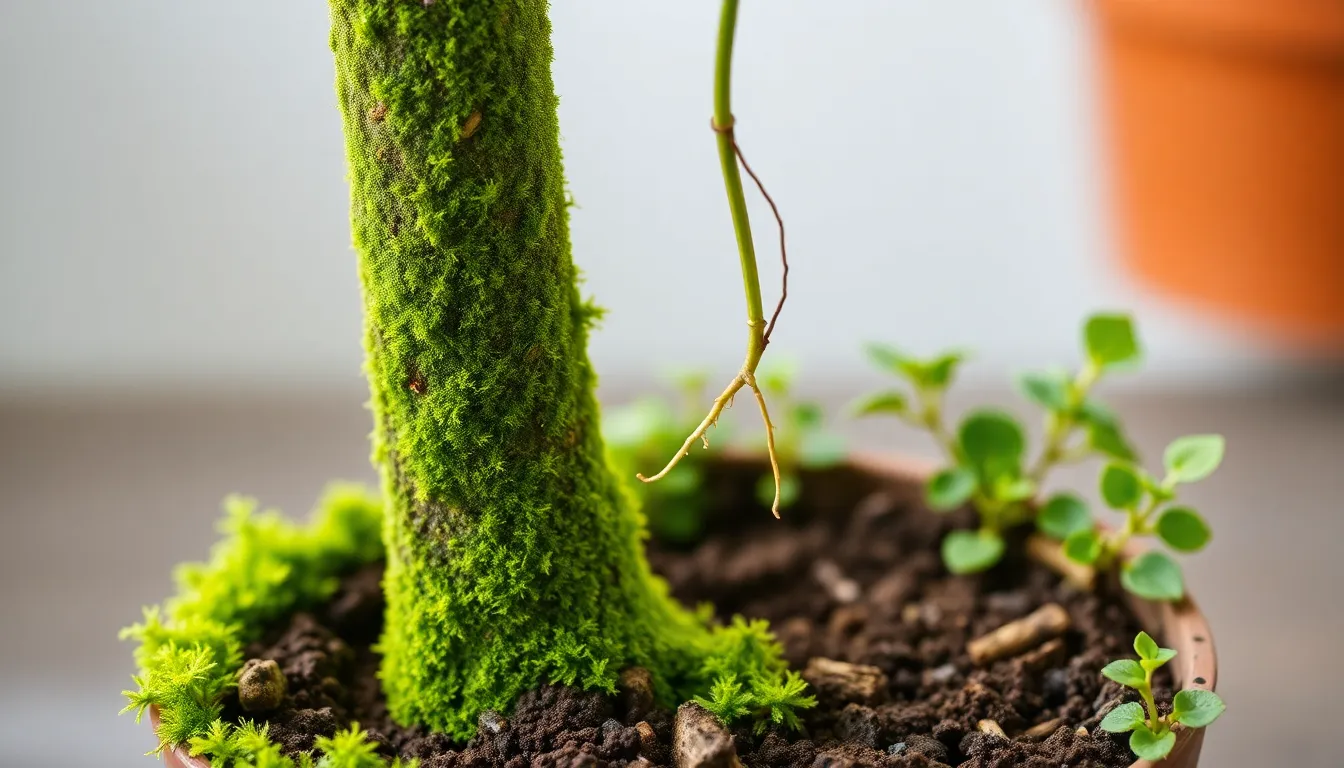
Now that we’ve explored the benefits and types of moss poles, let’s walk through the proper installation process to ensure your climbing plants thrive with their new support system.
Preparing Your Plant and Pot
Selecting the right plant sets the foundation for successful moss pole installation. We recommend choosing vining or climbing plants that naturally benefit from vertical support, such as monstera, philodendron, or epiphytes like orchids and ferns. These plants have evolved aerial roots that actively seek textured surfaces to climb.
Choosing the appropriate pole height ensures your plant has room to grow. We measure our plant’s current height and add 2-3 feet to accommodate future growth. This forward thinking approach prevents the need for frequent pole replacements as your plant matures.
Preparing semi-hydroponics systems requires special attention for stability. We attach a metal rod inside the moss pole before installation when using LECA or Pon growing mediums. This internal support prevents the pole from shifting or toppling as the plant grows heavier.
Securing the Pole Properly
Centering the moss pole in your pot creates a stable foundation for climbing growth. We insert the pole carefully, ensuring it stands perfectly vertical and doesn’t lean to any side. A crooked pole can cause uneven growth patterns and potential structural issues.
Anchoring with growing medium locks the pole in place securely. For semi-hydro systems, we fill the pot around the pole with LECA or Pon, then shake the container lightly to settle the medium. We add more medium as needed until the pole feels completely stable when gently tested.
Stabilizing in soil requires firm pressure around the base. We press potting soil firmly around the pole’s foundation, creating a solid anchor point that won’t shift with watering or plant movement. This prevents wobbling that could damage developing aerial roots.
Training Your Plant to Climb
Attaching aerial roots before final placement ensures immediate contact with the moss surface. We gently secure the plant’s stems or existing aerial roots to the moss pole using soft ties, butterfly clips, or cotton string. This gentle approach prevents damage to delicate root systems.
Positioning for optimal growth keeps roots healthy and promotes attachment. We position the plant so its root system doesn’t directly touch the moss, which can cause root rot in some species. This spacing allows air circulation while encouraging upward growth toward the pole.
Maintaining moisture levels mimics the plant’s natural climbing environment. We regularly mist the moss pole to keep it moist, which encourages aerial roots to attach and grow into the textured surface. This consistent humidity creates the ideal microenvironment for healthy development.
Guiding new growth ensures continued vertical development. As our plants grow, we continue directing new stems toward the pole and securing them with gentle ties. This ongoing training helps establish strong climbing patterns that will support the plant’s long term structural integrity.
Maintaining Your Moss Pole for Optimal Plant Growth
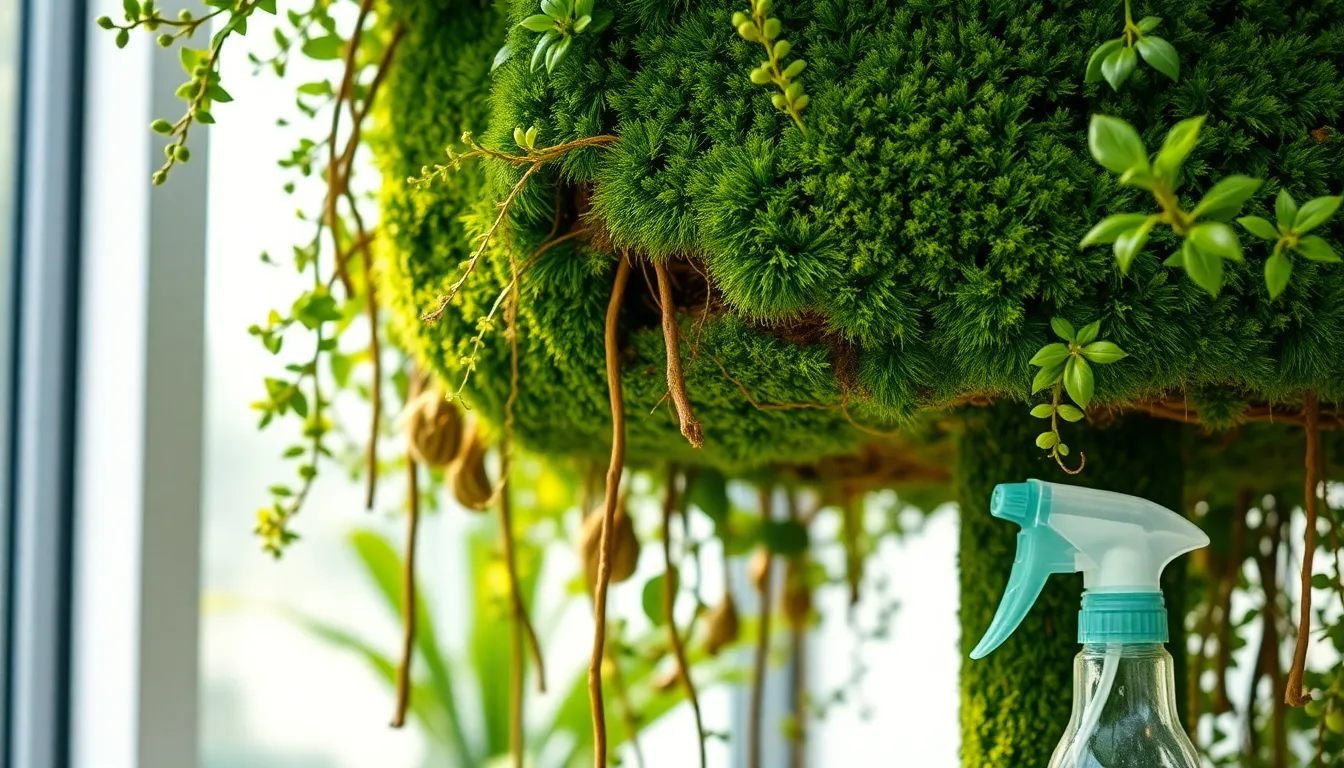
Proper maintenance ensures your moss pole continues supporting healthy vertical growth and providing essential moisture to aerial roots. Regular care keeps the pole effective as both a structural support and hydration source for your climbing plants.
Watering and Misting Techniques
Mist the moss pole 2-3 times weekly to maintain consistent moisture levels that aerial roots need for proper attachment and growth. We recommend using a spray bottle to thoroughly dampen the moss surface without oversaturating the surrounding soil.
Water the pole directly by pouring small amounts of water at the top and allowing it to distribute through the moss fibers. This technique ensures even moisture distribution along the entire pole length while supporting nutrient absorption throughout the vine.
Add mosquito bit granules to the moss before watering to enhance plant nutrition naturally. These supplements provide additional nourishment that climbing plants absorb through their aerial roots attached to the moistened moss.
Check moisture levels daily by touching the moss surface to ensure it feels slightly damp but not waterlogged. Consistent hydration helps the pole function as an effective moisture source while preventing the moss from drying out completely.
When to Replace or Extend
Extend your moss pole when plants reach within 6 inches of the top by attaching an additional pole section. Insert a thinner pole into the original structure to increase height while maintaining stability for continued vertical growth.
Replace moss poles every 18-24 months or when the moss begins breaking down and losing its fibrous texture. Fresh moss provides better grip for aerial roots and maintains optimal moisture retention capabilities.
Prune plant tops as an alternative to extending when space limitations prevent taller poles. This encourages propagation and allows continued growth while maintaining manageable plant size in your indoor garden.
Monitor pole stability regularly and replace if the structure becomes loose or wobbly. Secure attachment prevents damage to both the plant and its developing aerial root system.
Common Problems and Answers
Root rot in soil can still occur even though moss pole benefits, but aerial roots on the pole create a backup root system. This secondary root network helps sustain plants if soil roots become compromised by overwatering or poor drainage.
Aerial roots struggle to attach when moss lacks sufficient moisture or texture for secure gripping. Keep the moss consistently moist and fibrous to ensure roots can grab on properly and establish strong connections.
Moss poles dry out quickly in low humidity environments, reducing their effectiveness as moisture sources. Increase misting frequency and consider using a humidifier nearby to maintain optimal growing conditions.
Uneven growth patterns develop when only one side of the pole receives adequate moisture or light. Rotate your plant periodically and ensure even watering distribution to promote balanced vertical development.
Top Benefits of Using Moss Poles for Plants
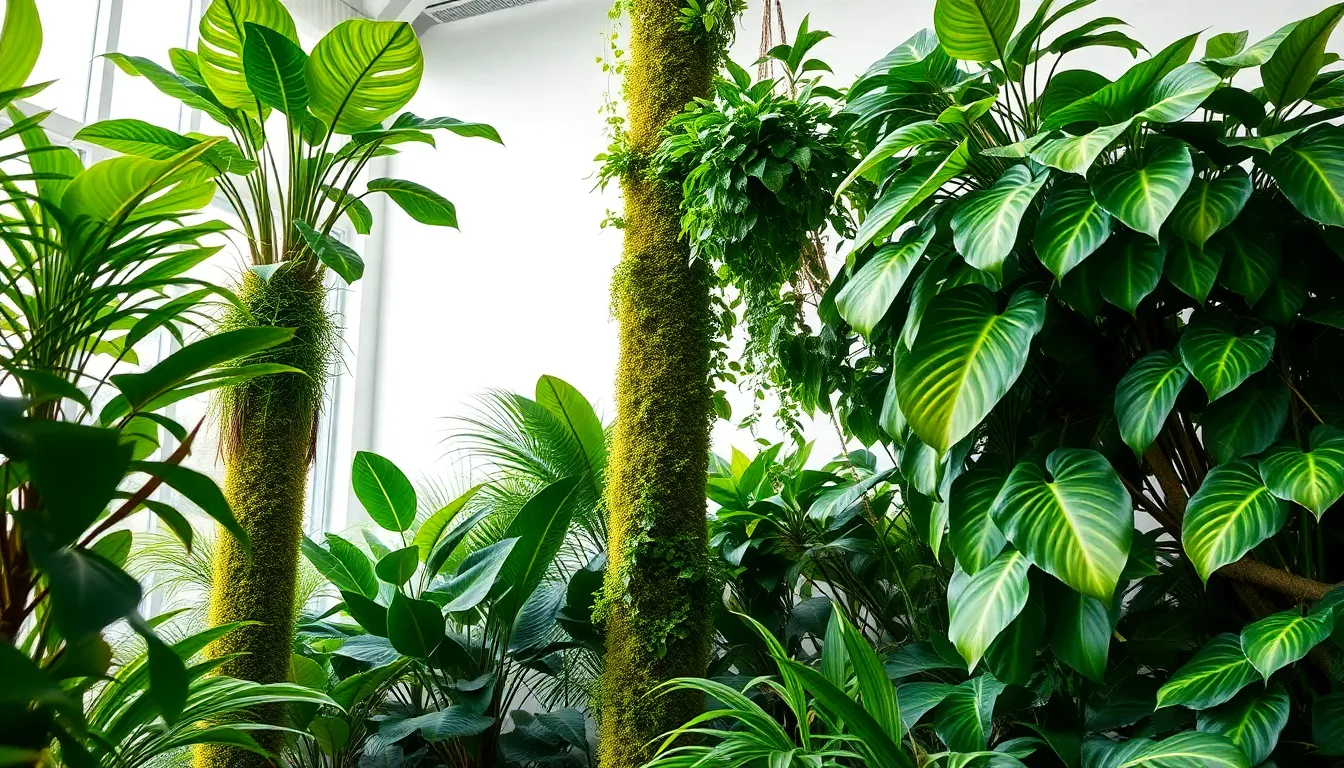
Moss poles transform climbing plants from struggling specimens into thriving vertical displays. These specialized supports offer three distinct advantages that directly impact plant health and aesthetic appeal.
Improved Plant Structure and Appearance
Moss poles provide sturdy support that prevents sprawling and creates an attractive vertical display for climbing plants. Plants secure their aerial roots into the fibrous material, eliminating the drooping and weak stem issues we often see with unsupported climbers. This vertical growth pattern mimics natural tree climbing behavior and promotes a neater, well-structured appearance.
Stems develop increased strength when trained on moss poles, reducing the risk of breakage from top-heavy growth. Leaves display more prominently along the vertical structure, creating an impressive focal point in any indoor garden. The tree-like support encourages upward growth patterns that showcase foliage in its most attractive arrangement.
Better Air Root Development
Moss poles retain moisture and nutrients unlike typical stakes, creating optimal conditions for aerial root growth. Regular misting hydrates the moss, establishing an environment similar to tropical climates where climbing plants naturally thrive. This moisture retention allows aerial roots to penetrate the fibrous material and develop robust networks.
Healthy air roots enhance the plant’s ability to absorb moisture and nutrients directly from the surrounding environment. These specialized roots contribute to overall plant vitality by providing additional nutrient uptake beyond what soil roots can offer. The humid microenvironment around moss poles supports continuous aerial root development throughout the growing season.
Increased Leaf Size and Variegation
Climbing behavior on moss poles signals plants to mature faster, often resulting in dramatically larger leaves. Vertical growth mimics natural conditions of reaching toward the rainforest canopy, triggering the plant’s genetic programming for mature foliage development. This upward movement stimulates pronounced fenestrations and enhanced variegation patterns in species like Monsteras and Philodendrons.
Plants develop more defined leaf characteristics when they achieve proper vertical support, including deeper splits and holes in mature specimens. The elevated growing position simulates higher light conditions, encouraging the development of desirable traits that indoor gardeners seek. Variegated varieties often display more vibrant color patterns when trained on moss poles compared to trailing growth habits.
DIY Moss Pole Projects for Budget-Conscious Plant Parents
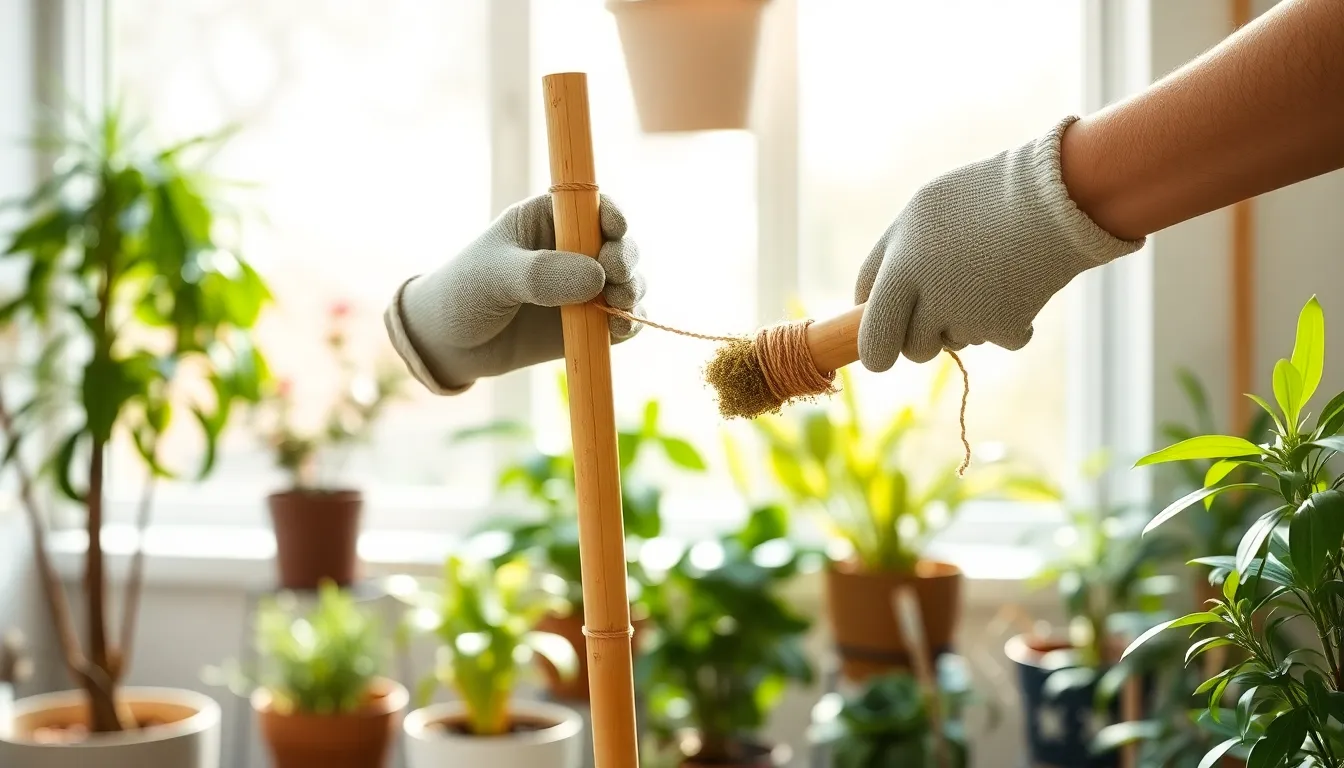
Building your own moss poles offers important savings while providing the same benefits as commercial options. We’ll guide you through creating effective support structures that cost under $10 compared to store-bought alternatives that range from $10 to $30 each.
Materials You’ll Need
Sturdy poles form the foundation of your DIY moss pole project. Bamboo sticks, wooden dowels, or PVC pipes work exceptionally well for creating durable vertical supports. Sphagnum moss serves as the primary moisture-retentive material, though sheet moss provides an alternative option for budget-conscious gardeners. Securing materials like twine, string, or zip ties hold everything together effectively. Essential tools include scissors or garden shears for trimming and a spray bottle for maintaining optimal moisture levels.
Construction Steps
Prepare your pole by selecting one that matches your plant’s current height plus desired growth space. Moisten the sphagnum moss thoroughly in water to make it pliable and enhance its moisture-retentive properties. Wrap the wet moss around the pole evenly, creating a consistent layer that mimics natural bark texture. Secure the moss tightly with twine or string in a spiral pattern, ensuring no loose sections remain. Install the completed pole into your plant’s pot near the main stem, then gently tie climbing vines to encourage upward growth patterns.
Cost Comparison
| Option | Price Range | Materials Included |
|---|---|---|
| DIY Moss Poles | Under $10 | Bamboo stick, sphagnum moss, twine |
| Store-Bought Poles | $10-$30 each | Pre-assembled pole with moss |
DIY moss poles maximize cost savings while delivering identical structural and growth benefits as commercial versions. Bulk purchasing of materials further reduces costs when creating multiple poles for your plant collection. Customization options allow you to tailor pole dimensions to exact plant needs without paying premium prices. Material reuse from previous projects or garden supplies can bring costs even lower than our $10 estimate.
Where to Buy Quality Moss Poles for Your Plants
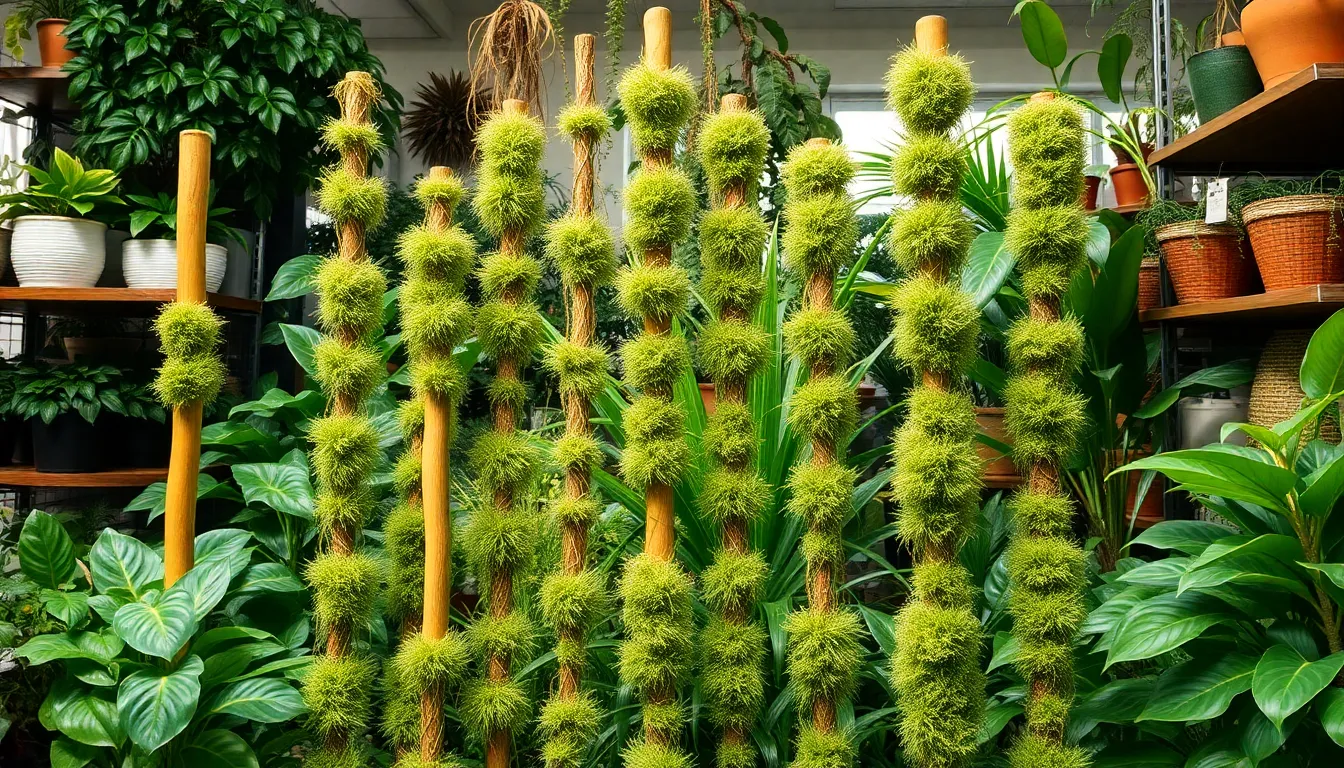
We’ll explore the best places to purchase moss poles that meet your climbing plants’ exact needs and ensure long-term support for healthy growth.
Online Retailers and Marketplaces
Amazon and major e-commerce platforms offer the widest selection of moss poles with competitive pricing and customer reviews to guide your decision. You’ll find modular and extendable designs that grow with your plants, featuring engineering that allows for easy extension and better aesthetics. These platforms typically stock poles ranging from 12 inches to 6 feet, with prices starting around $8 for basic models.
Specialized online plant retailers provide premium moss poles crafted specifically for tropical climbing plants like pothos and monstera. Many of these stores offer bundle deals that include mounting hardware and care instructions. We recommend checking retailers like The Sill, Bloomscape, and Plant Proper for professionally curated options.
Direct manufacturer websites often feature exclusive designs and bulk purchasing options for plant enthusiasts with multiple climbing specimens. These sources frequently provide detailed specifications about moss composition and pole durability that you won’t find on general marketplaces.
Local Garden Centers
Traditional nurseries stock moss poles alongside their tropical plant collections, allowing you to physically examine the pole quality before purchase. Staff members can often provide personalized recommendations based on your exact plant varieties and growing conditions. Most garden centers carry 2-4 foot poles as standard inventory items.
Home improvement stores like Home Depot and Lowe’s increasingly feature moss poles in their gardening sections, especially during peak growing seasons. These locations offer convenient pickup options and typically stock budget-friendly alternatives alongside premium choices.
Regional plant centers frequently carry specialized moss poles designed for local climate conditions and popular houseplant varieties in your area. These retailers often provide the best value for money while supporting local businesses.
Specialty Plant Stores
Tropical plant boutiques excel at stocking moss poles customized for rare and exotic climbing species that require exact support structures. These stores often carry unique pole designs and premium sphagnum moss varieties that enhance plant growth and appearance.
Hydroponic supply stores offer innovative moss pole alternatives and materials for DIY enthusiasts who want to customize their plant support systems. You’ll find professional-grade components and specialized growing media not available through general retailers.
Plant collector communities and local plant societies frequently organize group purchases of high-quality moss poles at discounted rates. These networks provide access to specialty products and connect you with experienced growers who can share installation and maintenance tips.
Conclusion
We’ve explored how moss poles transform the growth and health of our climbing plants while adding natural beauty to our indoor spaces. These simple yet effective supports bridge the gap between our plants’ natural habitat and our homes creating optimal growing conditions.
Whether we’re nurturing young pothos or mature monstera specimens moss poles offer the structural support and moisture retention our climbing plants crave. From DIY options to premium store-bought varieties there’s a moss pole solution for every plant parent’s needs and budget.
The investment in quality moss poles pays dividends through stronger healthier plants with impressive foliage development. Our climbing companions will reward us with lush growth and stunning mature characteristics when we provide them with the vertical support they naturally seek.
Frequently Asked Questions
What is a moss pole and why do climbing plants need them?
A moss pole is a vertical support structure made from sphagnum moss that mimics the natural growing environment of climbing plants. Climbing plants like pothos and monstera need moss poles because they prevent drooping leaves, provide textured surfaces for aerial roots to attach, and promote healthier vertical growth with larger, more mature leaves.
Which plants benefit most from moss poles?
Pothos, philodendrons, monstera species, syngonium, and hoya are among the best climbing plants that thrive with moss poles. These plants develop stronger aerial roots, larger leaves, and more vibrant foliage when given proper vertical support that mimics their natural climbing behavior.
How do I choose the right size moss pole for my plant?
Young plants like small pothos typically need 2-3 foot poles, while mature specimens require 4-6 foot structures. Consider your plant’s current size, growth rate, and mature potential. Choose a diameter that matches your plant’s aerial root system and plan for future growth by selecting slightly larger poles.
How often should I water or mist my moss pole?
Mist your moss pole 2-3 times weekly to maintain moisture levels. The sphagnum moss should feel damp but not waterlogged. This creates a humid microenvironment that supports healthy aerial root development and reduces the need for frequent plant watering while maintaining optimal hydration.
Can I make my own moss pole or should I buy one?
Both options work well. DIY moss poles allow customization and cost savings, while store-bought poles offer convenience and uniform quality. Traditional sphagnum moss poles provide excellent moisture retention, while coconut coir poles offer an eco-friendly alternative with good anchoring capabilities for climbing plants.
How do I install a moss pole in my plant’s pot?
Center the pole in the pot and secure it firmly in the soil. Gently train your plant’s vines around the pole, attaching aerial roots to the moss surface. Use soft ties if needed to guide growth. Ensure the pole is stable and maintain consistent moisture to encourage the plant to climb naturally.
What are the main benefits of using moss poles?
Moss poles improve plant structure by preventing sprawling, promote stronger aerial root development, and encourage larger leaves with better variegation. They create a humid microenvironment, reduce stem breakage, and help climbing plants achieve their natural mature appearance with enhanced fenestrations and color patterns.
Where can I buy quality moss poles?
Quality moss poles are available at online retailers like Amazon, local garden centers, home improvement stores, and specialty plant boutiques. Hydroponic supply stores offer premium options, while local plant communities often organize group purchases. Choose reputable suppliers that offer modular or extendable designs for growing plants.

